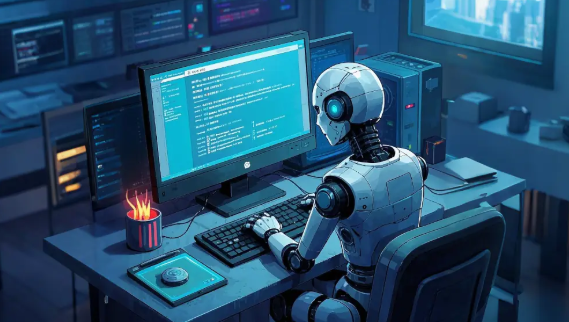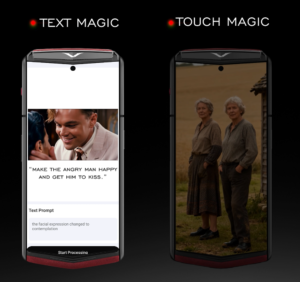
With the explosion of AI coding assistants like GitHub Copilot and ChatGPT, the landscape of software development and computer science education has been permanently altered. In 2025, the ability to generate functional code with a simple prompt is commonplace. This paradigm shift brings incredible efficiency but also raises critical questions about originality, academic integrity, and skill assessment. This is where the AI coding detector emerges as an essential tool for professionals across industries. This guide provides a deep, data-driven analysis of why these detectors matter and which ones lead the pack in 2025.
Why the Rise of AI Coding Detectors is a Critical Trend in 2025
The proliferation of AI-generated code is not a future trend; it's the current reality. The market for tools that can distinguish between human-written and machine-generated code is expanding rapidly for several key reasons:
-
Upholding Academic Integrity: Educational institutions are at the forefront of this challenge. An AI coding detector is becoming as standard as a traditional plagiarism checker to ensure students are developing foundational programming skills rather than simply outsourcing their assignments to an AI.
-
Protecting Intellectual Property: In the corporate world, ensuring the originality of a codebase is paramount. Companies need to verify that code committed by developers is their own work, not a copy-paste from an AI that could introduce licensing or security issues.
-
Validating Technical Skills: For recruiters and hiring managers, these tools are invaluable for verifying the authenticity of code submitted during technical interviews and take-home tests, ensuring they are assessing a candidate's genuine problem-solving ability.
Market predictions show the AI detection market, including code detectors, is set to grow exponentially, becoming a standard part of the software development lifecycle and academic evaluation process.
How Does an AI Coding Detector Actually Work?
An AI coding detector doesn't just look for copied text. It uses sophisticated models to analyze the intrinsic properties of the code itself, searching for the subtle fingerprints left by large language models (LLMs).
The core mechanism involves analyzing multiple vectors:
-
Syntactic Patterns: AI-generated code often has a distinct “flavor.” It might be overly perfect, use textbook-standard variable names, or lack the idiosyncratic comments and logical shortcuts a human developer would employ.
-
Statistical Analysis: These tools measure code “perplexity” and “burstiness.” Human-written text and code tend to have variable sentence or line complexity (burstiness), whereas AI-generated content can be more uniform.
-
Comparison to Training Data: The detectors are trained on massive datasets containing billions of lines of both human and AI-generated code. They learn to recognize patterns characteristic of different AI models.
-
Lack of “Human Error”: AI code rarely contains the types of common-sense logical errors, typos in comments, or inefficient but functional code that are hallmarks of a human learning process.
By combining these signals, a modern detector provides a probability score indicating the likelihood that a piece of code was generated by an AI.
2025's Top AI Coding Detectors: A Head-to-Head Comparison
After extensive testing of the leading platforms, we've identified the top performers based on accuracy, features, and target audience.
1. Codeleaks by Copyleaks: The Specialist
-
Detailed Breakdown: Codeleaks is one of the few tools on the market built specifically for detecting AI in source code. It supports over 20 programming languages and integrates directly into learning management systems (LMS) and IDEs.
-
Unique Features: Its standout feature is the ability to not only flag AI-generated code but also detect potential code plagiarism from online sources. It provides a detailed, color-coded report that is easy for educators and managers to interpret.
-
Pros: High accuracy specifically for code, extensive language support, excellent reporting and integration options.
-
Cons: As a specialized tool, its pricing can be higher than general-purpose AI detectors.
-
Pricing: Offers various tiers, including per-page pricing and enterprise plans tailored for educational institutions and businesses.
2. GPTZero: The Versatile Contender
-
Detailed Breakdown: Originally known for detecting AI-written essays, GPTZero has significantly enhanced its capabilities to include code detection. It uses a multi-layered approach to analyze code structure and syntax.
-
Unique Features: GPTZero's “Origin” Chrome extension allows for easy checking of code on platforms like GitHub or Stack Overflow. Its user interface is clean and intuitive, making it highly accessible for individual users or smaller teams.
-
Pros: Strong free tier for occasional use, simple and user-friendly interface, effective at detecting code from the latest models like GPT-4 and Claude 3.
-
Cons: Less feature-rich for enterprise-level reporting and management compared to dedicated solutions like Codeleaks.
-
Pricing: Offers a generous free plan, with premium subscriptions for higher volume and advanced features.
3. Turnitin: The Academic Standard
-
Detailed Breakdown: Turnitin is the established leader in academic plagiarism detection, and its AI detection capabilities now extend to code submissions within its platform.
-
Unique Features: Its biggest advantage is its deep integration into the existing academic workflow. Millions of educators already use Turnitin, making the adoption of its AI code detection feature seamless. It provides an overall AI-generated percentage within its standard similarity report.
-
Pros: Already integrated into most major LMS platforms, trusted brand in academia, provides a single platform for both text and code integrity.
-
Cons: The code detection is part of a larger suite and may not be as granular or specialized as Codeleaks. Access is typically through an institutional license, not for individual purchase.
-
Pricing: Enterprise-level licensing for educational institutions.
Comparative Analysis: Choosing Your AI Coding Detector
| Feature | Codeleaks | GPTZero | Turnitin |
| Primary Focus | Specialized Source Code Detection | General AI Content (Text & Code) | Academic Integrity (Text & Code) |
| Key Strength | High accuracy & detailed code reports | Accessibility & ease of use | Seamless LMS integration |
| Supported Languages | 20+ (Python, Java, C++, JS, etc.) | Major languages (Python, JS, Java) | Integrated within assignment settings |
| Integration | LMS, API, IDEs | Chrome Extension, API | Deep integration with Canvas, Moodle, etc. |
| Pricing Model | Subscription / Enterprise | Freemium / Subscription | Institutional License |
| Best For | CS Departments & Software Companies | Individual Developers & Small Teams | Universities & K-12 Institutions |
Frequently Asked Questions (FAQ)
1. Can an AI coding detector be 100% accurate?
No. It is crucial to understand that all AI coding detectors are probabilistic tools. They provide a likelihood score, not a definitive judgment. They can produce both false positives (flagging human code as AI) and false negatives (missing AI-generated code). They should be used as a powerful piece of evidence, not as the sole arbiter of a decision.
2. How can developers or students “fool” these detectors?
Users can attempt to “humanize” AI-generated code by adding personal comments, renaming variables to be more idiosyncratic, introducing minor inefficiencies, or restructuring the code's logic. While this can sometimes lower the detection score, the most advanced detectors are being trained to recognize these obfuscation techniques.
3. Is using an AI coding assistant like Copilot considered cheating or plagiarism?
This depends entirely on the context and the established policy. In a professional setting, it's a productivity tool. In an academic setting, using it for a graded assignment without permission is typically considered a violation of academic integrity. The key is transparency and adherence to the rules set by the institution or employer.
Recommended Audience
-
Educators & Academic Institutions: Turnitin for its seamless integration, or Codeleaks for specialized, high-stakes computer science programs.
-
Software Development Managers & Tech Leads: Codeleaks for its detailed reporting and ability to maintain code originality standards.
-
Recruiters & Technical Hiring Managers: GPTZero or Codeleaks for quickly screening the authenticity of candidate submissions.








